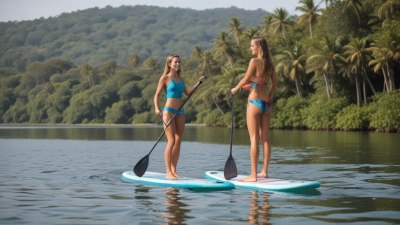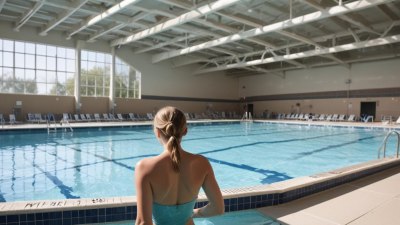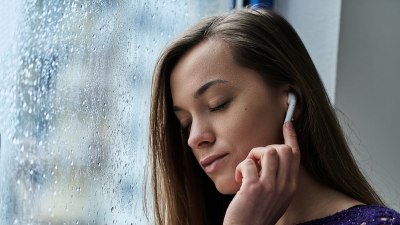The Truth About Paddleboarding: A Workout Disguised as a Leisure Activity
Uncover the hidden fitness benefits of paddleboarding, merging leisure with a full-body workout experience.

This image was created with the assistance of Freepik
Paddleboarding, an exhilarating water sport, has surged in popularity over the past decade. Often viewed as a leisurely activity to enjoy the sun and surf, many individuals are unaware of its multifaceted health benefits. This article strives to shed light on the truth about paddleboarding and how it effectively doubles as a robust full-body workout while being an engaging pastime.
Originally rooted in the Hawaiian islands, paddleboarding has evolved into various forms, including stand-up paddleboarding (SUP) and prone paddleboarding, appealing to diverse audiences. Its versatility and ease of access make it an ideal choice for those looking to enjoy the great outdoors while staying active. This seemingly relaxing activity offers multiple physical and mental advantages, debunking the myth that paddleboarding is merely a leisure endeavor.
Physical Benefits of Paddleboarding
Paddleboarding engages numerous muscle groups, making it an excellent form of exercise. From the shoulders to the legs and core, every stroke you take while paddling contributes to muscle strengthening and toning. One of the primary benefits of paddleboarding is the intense workout it provides for the upper body. Each paddle stroke demands the use of your shoulders, arms, and back, which ultimately helps to build muscle mass and improve endurance.
Moreover, paddleboarding is a fantastic core workout. Balancing on the board requires continuous engagement of the abdominal and obliques, enhancing stability and core strength. This not only assists in paddleboarding but translates effectively to other fitness pursuits, enhancing overall athletic performance. Furthermore, the lower body also plays a crucial role in balancing and controlling the board, thus toning the legs and improving muscle definition.
Cardiovascular Endurance
Paddleboarding is an excellent aerobic exercise that can significantly boost cardiovascular endurance. The continuous paddling motion elevates your heart rate, leading to improved oxygen intake and circulation. Regular paddleboarding can enhance your cardiovascular system, making it easier to perform daily activities and reducing the risk of heart disease in the long run.
The beauty of paddleboarding lies in its flexibility; you can control the intensity of your workout by adjusting your paddling speed or the distance you cover. Whether you are a casual paddler or an avid adventurer, paddleboarding can cater to your fitness level while providing an effective cardiovascular workout.
Mental Health Benefits
Beyond the physical aspects, paddleboarding has notable benefits for mental health. Being on the water has a calming effect that can reduce stress and promote relaxation. The rhythmic motion of paddling, combined with the sights and sounds of nature, allows for mindful moments that can help clear the mind and improve focus. This interaction with nature enhances mental well-being and promotes a sense of connectedness to the environment.
Engaging in paddleboarding can also combat feelings of anxiety and depression. The physical activity itself promotes the release of endorphins, the body's natural mood elevators. Since paddleboarding often occurs in serene and picturesque settings, this sport offers a unique opportunity to escape the chaos of everyday life, serving as a form of therapy.
Accessibility and Social Aspects
Paddleboarding is an accessible sport for individuals of all fitness levels. Many rental shops and lakes offer equipment for first-time paddlers, providing both boards and safety gear. With minimal equipment needed—just a paddleboard, a paddle, and a life vest—it's easy to get started. Furthermore, paddleboarding provides an opportunity for social interaction. It can be enjoyed with friends, families, or during organized group events, fostering a sense of community.
Taking paddleboarding lessons can introduce newcomers to the sport and help them learn proper techniques, improving their experience on the water. This sense of belonging encourages those who may not regularly exercise to engage in an enjoyable physical activity.
Burning Calories on the Water
Many paddleboarding enthusiasts are intrigued by how many calories are burned during their water adventures. On average, paddleboarding can burn between 300 to 800 calories per hour, depending on various factors such as your weight, intensity level, and the environmental conditions. For instance, paddling in calm waters may yield a lower calorie burn compared to tackling waves or currents.
As a low-impact exercise, paddleboarding is suitable for all ages and fitness levels, offering a healthy alternative to more strenuous activities. Many people who may be hesitant about high-intensity workouts find paddleboarding an attractive option that provides substantial calorie-burning potential without harsh impact on the joints.
Research and Findings
Studies backing the efficacy of paddleboarding as a workout continue to grow. Research indicates that paddleboarding can significantly enhance overall fitness, musculoskeletal strength, and balance. According to a study published in the Journal of Physical Activity and Health, participants who engaged in paddleboarding reported improvements in total body strength and balance relative to those who partook in traditional gym workouts alone.
Such findings highlight how paddleboarding is not only entertaining but also a beneficial form of exercise that can provide the same health advantages as more traditional workouts, if not more.
Incorporating Paddleboarding into Your Routine
Incorporating paddleboarding into a fitness regime is simple and enjoyable. Beginners are encouraged to start on calm waters and gradually progress to more challenging conditions as they build confidence and skill. Creating a schedule that includes regular paddling sessions can enhance consistency, leading to improved fitness results.
Moreover, integrating paddleboarding with other forms of exercise, such as yoga or circuit training, can keep workouts fresh and exciting. For instance, paddleboard yoga has gained traction, combining mindfulness, balance, and strength to create a unique fitness experience. This blending of habits can help keep individuals motivated and engaged in their journey toward health.
Eco-Friendly Exercise
Paddleboarding is an eco-friendly activity that fosters appreciation for aquatic environments. By participating in paddleboarding, enthusiasts actively promote conservation efforts and environmental awareness. Many paddleboarding organizations advocate for clean waterways and ecosystems, encouraging paddlers to engage in cleanup initiatives and responsible practices.
Through paddleboarding, participants not only contribute to their health but also develop a deeper connection with nature, emphasizing the importance of preserving our planet for future generations.
The truth about paddleboarding is evident: it is a workout disguised as a leisure activity that offers both physical and mental health benefits. From promoting fitness to fostering social connections and enhancing well-being, paddleboarding serves multiple purposes. Whether you choose to paddle alone for introspection or with friends for camaraderie, this sport holds the power to transform your approach to exercise and leisure alike. So, grab a paddleboard, head to the water, and embrace the amazing experience that awaits you!











